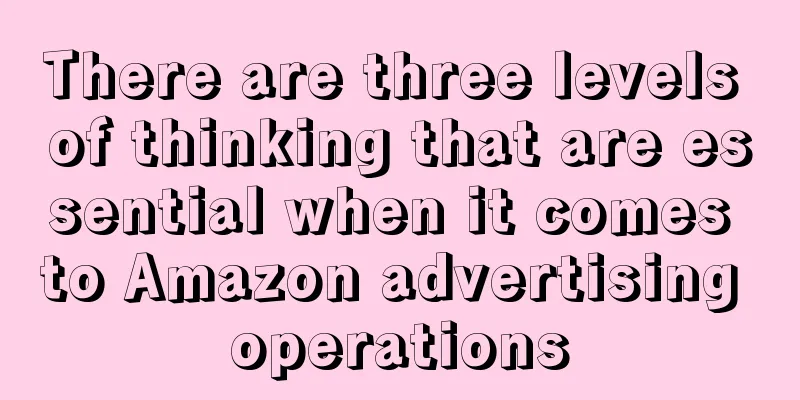Answer two questions about Amazon advertising:
Question 1: My conversion rate is high, but the traffic is not enough, what should I do?
Regarding this issue, I think it should be considered from two levels: Listing optimization and the advertisement itself.
From the perspective of Listing optimization, factors such as whether the category selection is accurate, whether the keywords in the title are accurate and cover enough keywords, whether the pictures (especially the main picture) are beautiful and textured, the number and star rating of product reviews, and whether the product price is competitive among similar products will affect the exposure of the advertisement and even the conversion rate.
Judging from the seller’s advertising data, the conversion rate is still relatively high, indicating that there is no problem with Listing optimization. Then, we need to consider it from the level of the advertisement itself.
When a listing is advertised but traffic is insufficient, the core reasons are: low bid, few ad keywords (manual), and small daily ad budget. You can make targeted adjustments based on your actual situation. By increasing the bid, your ad will be ranked higher and can get more exposure and clicks. By adding some keywords to manual ads, you can also get more exposure and clicks. If your budget is not enough and your ad is always blown up, or if your ad is blown up after you increase the bid, then you should increase the budget for the ad appropriately. With more budget, you can naturally get more clicks, and the seller's conversion rate is high, which can bring more orders.
Question 2: The keyword ranking is already very high, is it necessary to run manual advertising?
The most direct indicator to determine whether it is necessary to continue running an advertisement is the advertising input-output ratio, that is, the ACOS. If ACOS is cost-effective, that is, the ACOS value is less than the gross profit margin, this advertising plan is worth continuing.
Of course, the role of advertising goes beyond this.
In addition to the direct input-output ratio, the first level of advertising is actually to bring more traffic and orders to the listing, in order to push up the BSR ranking of the listing, and thereby obtain more natural traffic.
Therefore, whether an advertisement is worth continuing to run should also be evaluated by placing the advertising cost in the total number of orders for the listing.
If the orders brought by advertising account for too large a proportion of the total orders at a certain stage, then it should not be stopped. Once it is stopped, the advertising orders will be gone and the total number of orders will be cut in half, which will cause serious damage to the listing itself and its operation.
However, if the orders brought by advertising account for a small proportion of the total number of orders, then even if the ACOS is higher (higher than the gross profit margin) and even if the direct input-output ratio of advertising is not cost-effective, it is not necessary to turn off the advertising. Because as I often emphasize in my offline in-site advertising courses, the input-output ratio of advertising must be viewed from a broad perspective to see whether it can achieve the "three 30%s". As long as the product of advertising ACOS*the percentage of advertising orders in total orders is less than the gross profit margin, the advertising cannot be considered a loss.
At this point, we also need to broaden our horizons to another function of advertising: gaining a larger market share.
There is a term in economics: stock market. For Amazon sellers, we can basically regard our operation of a product as a game of grabbing market share in the existing market. Market sales already exist objectively and are relatively fixed. If you want to survive and develop better, you not only need to perform well yourself, but the key is that you must be better than your competitors. What does it mean to be better than my competitors? It means that I receive more orders and my BSR ranking is higher than that of my competitors. To look at it in a slightly narrower way, if you receive one more order, your competitors will have one less order. Competition in business is often so cruel, otherwise why would Lei Jun say "drive yourself crazy and kill your opponents"?
To a certain extent, advertising is a tool to help us achieve the goal of “taking one more order”. Maybe you did pay a lot of advertising costs for the extra orders, maybe these extra orders did not bring you direct profits, and even diluted the profits of your natural orders, but these extra orders can distance you from your competitors and give you a more competitive advantage. One day, your competitors will feel that this product is not interesting and they will withdraw from the market. Your market share will be large enough and you can naturally increase your profits again.
So, from this perspective, whether to stop advertising when the ACOS is no longer cost-effective is really a question of tactical thinking and strategic considerations.
Thirdly, in this question, the seller’s question is “The keyword ranking is already very high, is it necessary to run manual advertising?” This involves the question of the relationship between manual advertising and natural keyword ranking.
In addition to bringing exposure and clicks and thus generating orders, manual advertising also has an important function of helping you increase the natural ranking of keywords.
As operations progress and advertisements are placed, when your keyword ranking is high enough, you should ask yourself: How did my current keyword ranking come about? Is there no contribution from manual advertising? If manual advertising plays a certain role in the increase in keyword rankings, then if manual advertising is turned off, will the keyword ranking also decline due to the loss of exposure, clicks, and orders from manual advertising? In fact, as long as you operate it yourself, you will have answers to this series of questions.
So, based on this, my suggestion is that as long as the performance of manual advertising is not terribly bad, it is better not to turn it off.
What if it's really horribly bad?
You can choose to lower your ad bid to a point where there are only a few clicks, and then just leave it there.
Why do this?
Regarding advertising, I have a famous saying: You can’t stop taking medicine!
When it comes to the distribution of advertising and traffic, Amazon is really frugal - you give me money and I give you traffic. When you stop advertising, the weight of the listing that was originally related to advertising is completely gone. However, if you lower the advertising bid, at least you can give Amazon's advertising algorithm a thought - "Maybe, it will raise the bid tomorrow!"
Regarding the damage caused after the advertising is stopped, I believe that sellers who have worked on Taobao, Tmall, and AliExpress must have felt the pain deeply.

